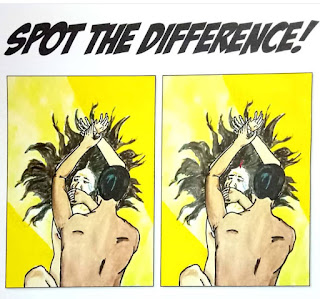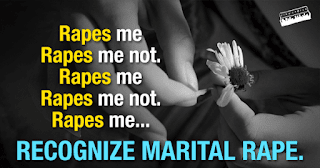ADOPTION: MORE HEARTS NEEDED IN THE PROCESS
 |
| Source- www.etsy.com |
“God knew that it doesn’t matter how
your children got to your family. It just matters that they got there”
Adoptions
have been taking place right from the ancient times. Earlier, adoptions used to
be more personal in nature. Before setting up a standard, adoptions generally
used to happen between relatives or within the close affinity of the biological
parents, on a small scale.
LEGALISATION OF ADOPTIONS
Today,
various legislations and rules have been formulated by governmental bodies
throughout the world, and in India as well, to make the process of adoption
legalized, and to ensure that adoptions are carried out in the best interest of
the child. Various laws, along with governmental and non-governmental organizations
have been established in India to carry out the process of adoptions. The very
first central law in India is the Juvenile Justice (Care and Protection of
Children) Act, 2015, read with the Adoption Regulations, 2017, which
provides for a universally accessible law for adoptions within India as well as
inter-country adoptions, alongside the Hindu Adoptions and Maintenance Act,
1956, which is applicable only to the Hindus.
A DETAILED PROCEDURE
The
overall language and the provisions of the Juvenile Justice Act
explicitly affirm that it is a child-centric legislation, made for the benefit
of the children and not the adoptive families. According to Sec.
2(2) of the Act, “adoption” means the process through which the
adopted child is permanently separated from his biological parents, and becomes
the lawful child of his adoptive parents, along with the conferment of all the
rights, privileges, and responsibilities that are attached to a biological
child.[1] Along with this Act, the Adoption
Regulations provide for a detailed procedure, through which the PAPs
(Prospective Adoptive Parents) have to go before they adopt a child. These
legislations primarily facilitate the adoption of OAS (Orphaned, Abandoned, and
Surrendered) children, through various agencies that are established for the
purpose.
Now,
a unique feature of this process is that it has a central online system, known
as the ‘Child Adoption Resource Information and Guidance System’ (CARINGS), for
facilitating, guiding, and monitoring the adoption program. It means that the
whole process, i.e. the registration of PAPs, selection of children, submitting
of reports and documents for scrutiny, happens through this online system,
under the vigilance of the agencies which control this process.
CARINGS-
A BOONE OR A BANE[2]
Digitalization
of adoptions has undoubtedly eased the process. This digital system has made
the process faster and more transparent, by giving the PAPs a centralized list
of children across all the states, and by putting the parents on a national
waiting list. But at the same time, the biggest lacuna of this system is the
absence of personal interactions between the social workers (working in the
agencies to administrate and carry out adoptions) and the PAPs. After the
digitalization, large numbers of adopted children have been returned to the
agencies, due to the disruptions and dissolutions of the adoptions. A nationwide
data shows that around two hundred and seventy five children have been
returned to the system in the past two years due to their non-adjustment in the
adoptive family.
What
happens when an already abandoned and surrendered child is returned? What is
the psychological impact on the child? What happens when the adoption, which is
to give an orphan a home, fails? It definitely is a huge trauma for the children,
especially for those who have faced multiple disruptions, i.e. one with the
loss of their biological parents, and the other because of the return from their
adoptive parents. The words ‘Disruption’ and ‘Dissolution’ were included
for the first time in the Adoption Regulations, 2017, which determines the
process if any of the two happens.
Regulation
2(7)
– Disruption means the child being unmatched from the adoptive family due to
non-adjustment of the child with the adoptive family after placement,
but prior to the completion of the legal process of adoption.
Regulation
2(8)
– Dissolution means the annulment of the adoption legally, due to
non-adjustment of the child with the adoptive family, after the court decree
for the adoption has been obtained.[3]
 |
| Source- The New York Times |
LACK
OF COUNSELLING AND HUMAN TOUCH
Most
of the children who are returned to the system are found to be of ages five
years and above. Reports suggest that older children find it difficult to
adjust to a new environment. Likewise, many parents decide to adopt children,
but then realize that they weren’t prepared for it and are consequently not
able to adjust with them, leading to an increase in the cases of disruptions.
Sometimes it becomes difficult to understand the motive behind the parents who
want to adopt children. Before introducing this centralized system, adoptions
used to happen more or less personally, where the parents would in-person visit
the agencies and interact with the social workers, the counsellors, and the
children. It was easier for the counsellors to understand the motive behind such
adoptions. For example, if a couple had just lost their
child, the social workers or counsellors could dissuade the parents from
adopting right away and would be suggested to wait until they could come to
terms with their grief. But under the present system, the parents are able to
select a child online wherein the authorities can act only as catalysts, with
minimum interaction with them.[4]
There
is a need for more heart in the process. Each and every child has a different
personality, which needs to be kept in mind while placing them in their new
homes. Earlier, before placing any child into adoption, the social workers
would personally visit those families and try their best to familiarize the
child with the surroundings in that area.
Though
in the current process the social workers from the agencies are allowed
multiple times to visit the potential adoptive families, it has not helped
much. It happens quite often that though the parents register through the
nearby agencies in the online system, there is a fair chance that they may end
up adopting a child from a different agency in another state due to the
centralization. In such a situation, the agencies lack interest in actively
taking part in the verification process.[5]
IS FOSTER CARE REALLY HELPFUL?
The
adoption laws in India provide for foster care. It is a provision in which the
parents are asked to fly down to the place where the child is currently
staying, i.e. the child care institutions.
In this, the child is temporarily placed with the PAPs for a specific period to
check whether the child and the parents are able to adjust with each other.
Ideally,
this is supposed to be a good initiative, but it still has some loopholes. In
case of inter-state or inter-country adoptions, it becomes economically very
difficult for the parents to travel to other states, due to which they do not
even stay for a few days and let the child be comfortable with them. This
sometimes ultimately causes disruption in the initial stage itself. These
continuous switches between the social environment of the children act as huge
emotional and psychological setbacks for them.
CONCLUSION
Undoubtedly,
the above-stated lacunae in the current adoption system are causing a negative
impact on the child. It is a startling fact that the number of children that
are returned by the PAPs due to non-adjustment, is very less when they are
placed in inter-country adoptions as compared to adoptions within India. It
clearly shows that the support system for the parents in India is less
effective than that in foreign countries. This is also an indication of the
adjusting nature of the foreign parents, and the existence of a strong concrete
system around them.
To
revive our current process, it is necessary that stricter follow-up procedures
should be put in place, once the parents take the child after the final decree
of adoption from the courts. The adoption authorities should make sure that the
PAPs are in the correct state of mind while adopting a child. Along with counselling,
the social workers can discuss with the parents the effects of adoptions, and
also explain the psychological state of the adoptive child, which may help the
PAPs to better accommodate the child in their family.
BY
SAYALI MANDLIK
3RD B.A.LL.B.
ILS LAW COLLEGE
[1] S. 2(2), Juvenile Justice Act, 2015.
[2] Shrabonti Bagchi, The
Returned, Live Mint, (28/09/2019), available at https://www.livemint.com/mint-lounge/features/the-returned-1569587584096.html
[3] Rule 2(8), Adoptions
Regulations, 2017, available at http://cara.nic.in/PDF/Regulation_english.pdf
[4] Fatima Khan, Why Indian Parents have returned 278 of 6650 adopted
children in 2017-19, The Print, (12/11/2019), available at
https://theprint.in/india/why-indian-parents-have-returned-278-of-6650-adopted-children-in-2017-19/319437/
[5] Aarefa Johari, Cold Comfort: What ails India’s new centralised
online adoption system, Scroll.in, (06/06/2017), available at https://scroll.in/article/839493/cold-comfort-what-ails-indias-new-centralised-online-adoption-system



Comments
Post a Comment